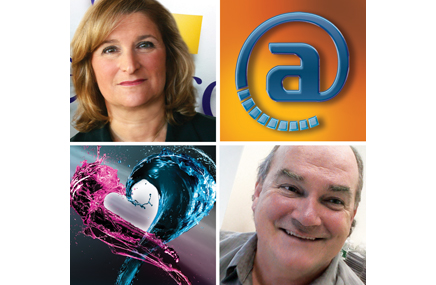Competition from generics led to cutbacks at some big clients last year, taking some steam out what had been a string of explosive growth years for Centron. President and CEO Marcia McLaughlin reports revenue was slightly down (it had topped $22 million in 2010) but still in the $15 million to $20 million range.
“The only thing you can do to make up for that is go get new business, and we did that really well,” McLaughlin says.
Indeed, it was a great year for new business. The agency began relationships with nine new clients and won 17 brands. Shionogi awarded AOR status for its Prenate franchise (prenatal nutrition) and advertising AOR and ME AOR for Ospemifene (postmenopausal vaginal atrophy).

“Ospemifene was a huge win because it’s going to be a huge brand,” McLaughlin says. “It was the biggest win of the year.
Additional AOR assignments came in from Bayer/Onyx for Nexavar (oncology); Eisai for its neuroscience franchise and for corporate communications; and Merz for antifungal Naftin 2% cream. From Merz, the agency also won in line promotion for Naftin 1% gel and for Aluvea (for hyperkeratotic conditions), plus prelaunch work for Aqua Glycolic Shampoo/Lotion.
Together with parent HealthSTAR Communications, Centron won medical communications AOR status for Daiichi Sankyo’s hypertension franchise.
Project work was landed with AstraZeneca for antipsychotic Seroquel XR and RA treatment Vimovo; Cephalon on a REMS program for Actiq/Fentora (cancer pain); Depomed for PHN product Gralise; OraPharma for antibiotic Arestin; and Vertex on an education program for Incivek, a new antiviral treatment for HCV.
The threat of generic competition ended promotional efforts on Cephalon’s Amrix, and the launch of the generic version of Lovenox ended promotional efforts on Eisai’s Fragmin. The agency also lost Dey business (AOR on MDD treatment Emsam and project work on additional products) when it consolidated into Mylan.
“Because we were so involved in the excitement of pitching and winning new business it felt like a growth year,” McLaughlin explains. “We’re all about positive energy. When an agency starts hitting a rough spot, if you just focus on that it can be a negative, but if you focus on identifying new potential clients, pitching, and winning them, it becomes a positive. Truthfully, I think we’re in a better place today because of it. We have a really solid, healthy client portfolio because of it. And we won exciting brands like Ospemifene.”
Headcount was down from about 80 in 2010 to about 70 last year, mostly through attrition, McLaughlin says. It’s up to about 80 again now.
About 40% of projects include a digital deliverable, and that’s increasing every year. “There’s not a piece of business that we pitch that doesn’t have a huge digital component and a tremendous social media component to it,” McLaughlin says. “It’s become part of what we do. Vertex Incivek was a huge digital initiative that included showcasing Hep C patient stories.”
Extending global reach through the HealthSTAR Vivactis Global Network was a big part of the agency’s growth plan. “HealthSTAR Global Network existed in the US, and Vivactis Global Health existed in Europe,” McLaughlin explains. “We joined forces in 2011 to create the HealthSTAR Vivactis Global Network. We’re pitching business together, so this will help fuel our growth in 2012 and beyond.”
From the July 01, 2012 Issue of MM+M - Medical Marketing and Media







